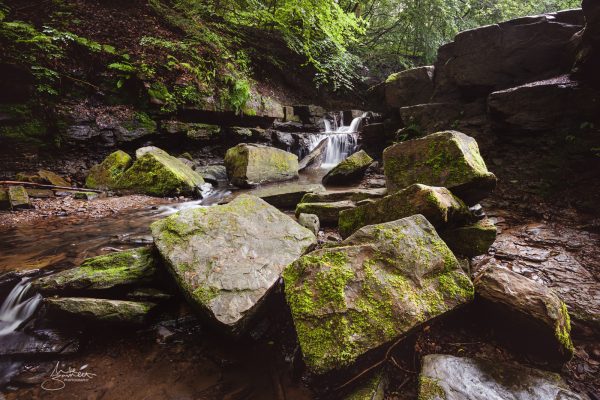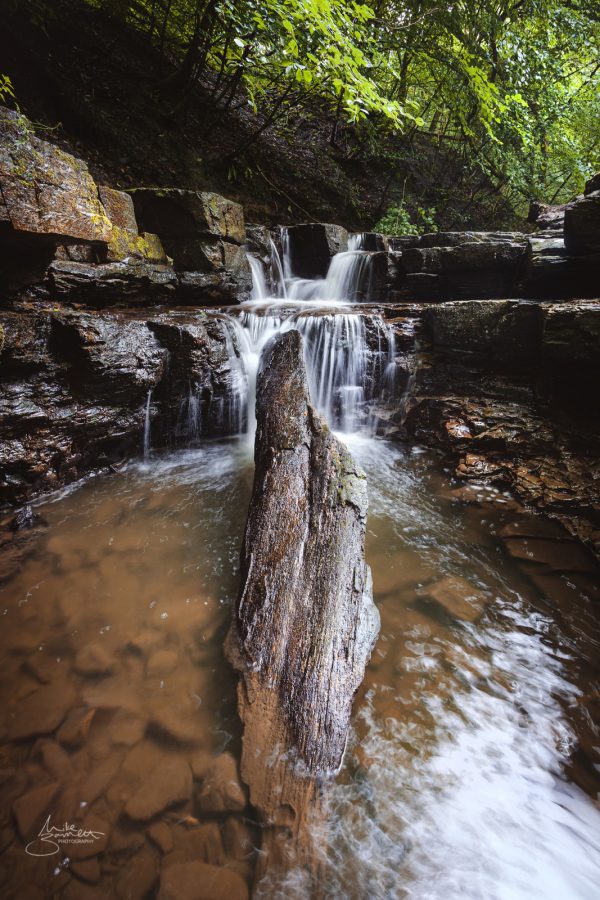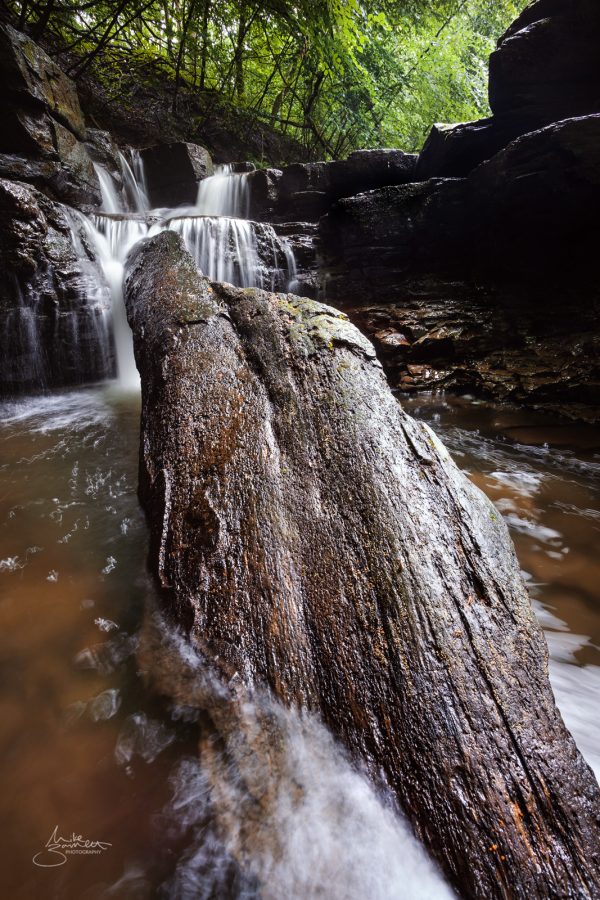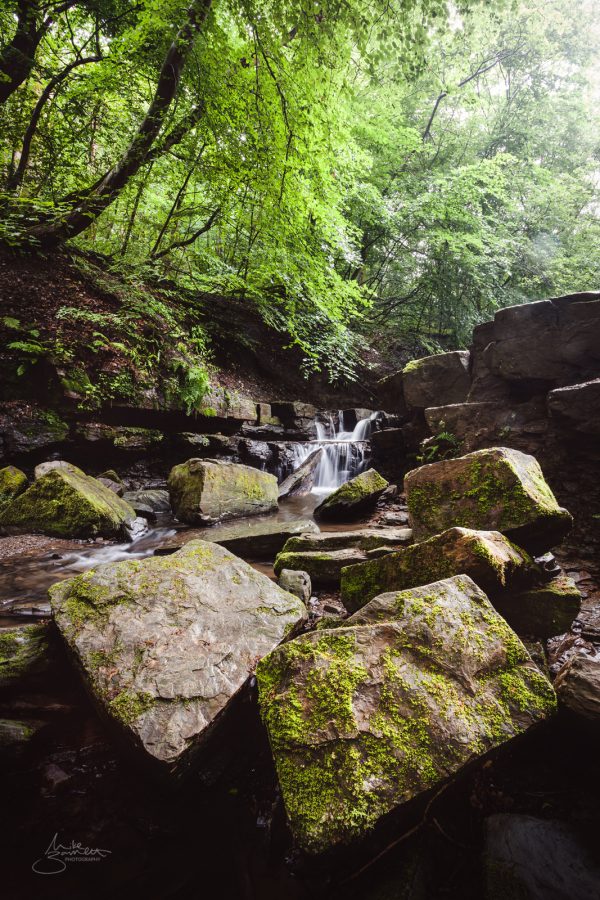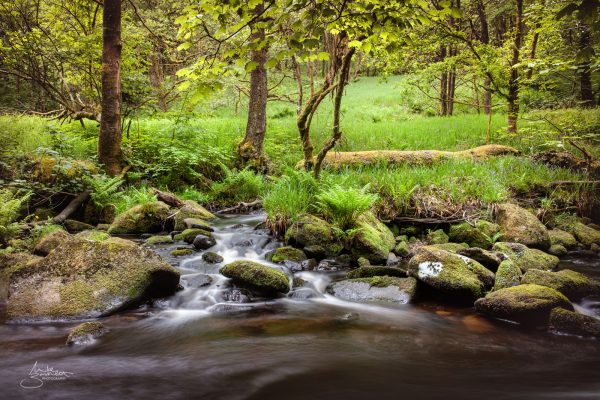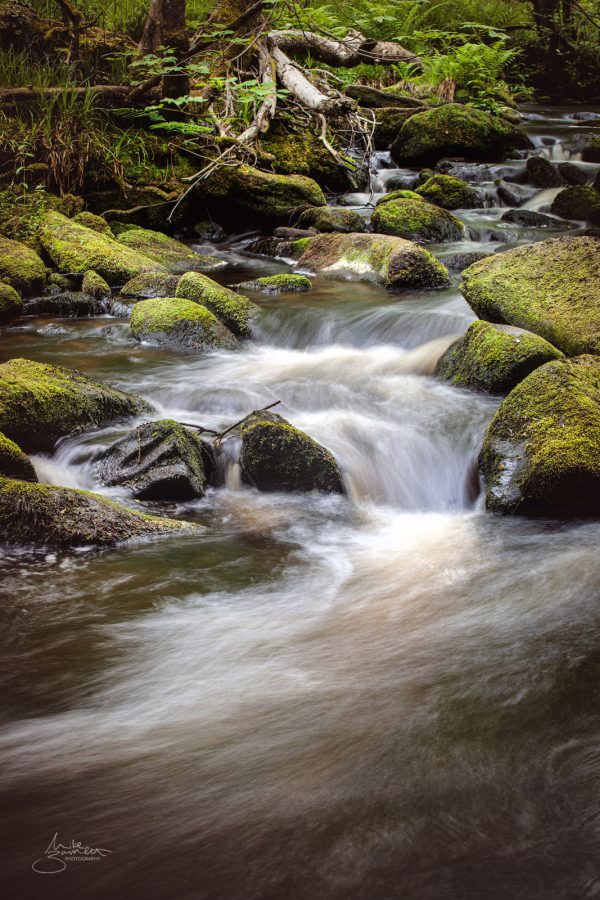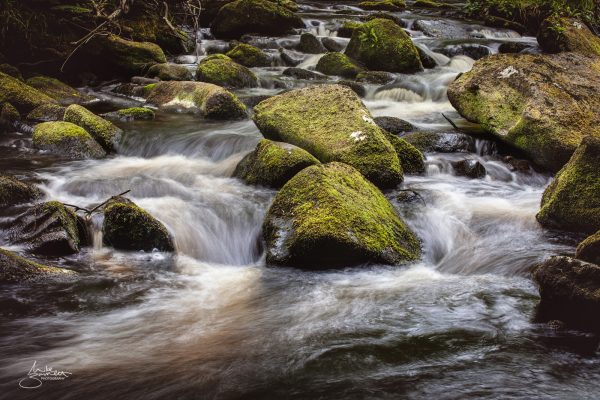I know, I can hear it now… “Out shooting water again Baz? It’s not like you!” Yes indeed, I just can’t help myself.
When shooting water in woodland you usually get a gap in the tree canopy where the light floods in and brightens up the water course. Obviously this depends on how wide the river or stream is. In the case of these shots, in each instance, the canopy was still rather closed as both the streams were fairly narrow. Trees on each side of the bank were close enough to form a closed canopy above the water where the foliage merged into one big umbrella.
There were one or two areas that opened up and light was able to flood in. It made for some interesting atmospherics. It’s not a bad thing though, especially when you’re taking long exposure shots on a tripod, as you have full control of your exposure times and how you want the available light to work in the image.
A closed canopy can serve to diffuse the light and you end up with shots with interesting light dotted around the composition. Even if ever so subtly, as is the case with the images below. You get lots of pockets of light and dark areas juxtaposed against each other which makes for some good contrasts throughout the composition. The only thing you might have to be considerate of is movement in the foliage if the conditions are breezy. But this can also work for you depending on the type of image you are after. There is always so much to consider when photographing this type of landscape. It’s what makes it so much fun.
For me, there is a sweet spot where long exposure, fast water river shots are concerned. I have seen many images where photographers have just opened up the shutter for as long as possible to capture a huge chunk of movement in the water and made it look like a blanket. A whited-out watery wilderness. You tend to get a huge amount of over-exposed areas in the water when this occurs. When it is overdone it can spoil the image and detract from the beauty of the scenery. So the sweet spot for me is a compromise somewhere between this and a normal snapshot. I want those smoothed-out elements in the flowing water, but I also want some of the energy left in too. Of course, this changes from shot to shot and it all depends on what you think works well within the composition at the time. Mostly though, I want to show the ever-changing course of the water as there is so much movement to be captured. So I tend to do a few test shots. I find the exposure I want and then play with the shutter timing and aperture until I hit the sweet spot which contains both those smoothing elements, but also something that captures the texture and ever-changing course of how the water is flowing.
As I said, I try to find the sweet spot. Here are some images where I hope to have done just that.
The first four shots were taken at Judy Woods in West Yorkshire. The water is called Royads Hall Beck.
The second four shots were taken at Hardcastle Crags in West Yorkshire. The water is called Hebden Beck.
© Mike Barrett Photography 2021 – All Rights Reserved

